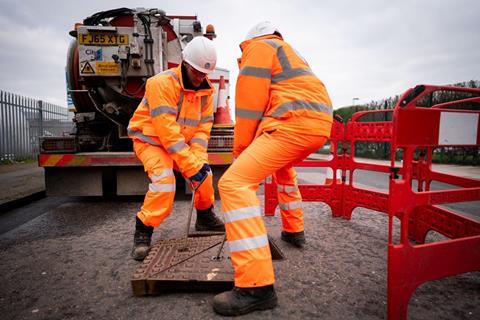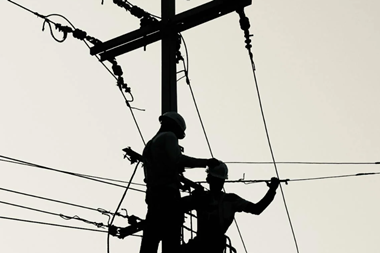The debacle surrounding the UK utility raises important questions for investors and politicians. In the first of a two-part analysis, Christopher Walker considers the company’s high leverage and the role of the regulator
Thames Water, which serves London and a quarter of the UK population, has faced heavy criticism over raw sewage discharges for years. Just this week it was handed a £3.3m (€3.86m) fine for one case. It follows a hefty £20m fine in March for dumping 4.2bn litres of undiluted sewage into the Thames between 2012 and 2014. The company’s chief executive, Sarah Bentley, was asked to forgo her bonus over the issue, and she resigned last week, sparking considerable debate.
To add to the impression of incompetence, the company apparently loses the equivalent of 250 Olympic-size swimming pools every day from its leaky pipes.
A sorry tale indeed, but investors need to consider the full implications carefully. In passing his March judgement, Judge Francis Sheridan noted “inadequate investment, diabolical maintenance and poor management”, and that incidents were “reckless” or “borderline deliberate” and “knowledge of what was going on went very high indeed”.
What went wrong? Critics of the debacle are focusing on the level and nature of the company’s debt burden and how it was acquired in a sector that started with a clean balance sheet. The entire water and waste sector was privatised 34 years ago for £7.6bn. At the time, the UK Treasury wrote off the industry’s £5bn debt, leaving companies with no debt at all. Indeed, it gave them £1.5bn of public money.

This was the situation when Thames Water was privatised in 1989. But over the years it borrowed heavily and is now some £14bn in debt. A large proportion of that was added when Macquarie, the Australian bank and infrastructure asset manager, owned Thames Water, reaching over £10bn when the company was sold in 2017.
Professor Nicholas Ind, the author of In Good Conscience and an advocate of better business ethics, cautions: “When one stakeholder group (typically investors) is advantaged too much over another, then you end up with a negative situation: consumers paying high prices, environmental damage and insufficient long-term investment. That seems to be what happened with Thames Water under Macquarie (and by extension businesses owned by private equity houses). Paying dividends becomes the main purpose of the business. The fines (even when they are £20m) are not that significant relative to the dividend payments.”
In 2017, a BBC investigation alleged that since Macquarie acquired Thames Water in 2007, total returns made by the bank and its investors averaged between 15.5% and 19% a year. It noted that £2bn of the original £2.8bn in debt used to acquire Thames Water was subsequently repaid to Macquarie through a Cayman Islands subsidiary, raised on new borrowings by Thames Water itself. This was despite a 2007 consultation paper by the UK’s water regulator that specifically said the £2.8bn in acquisition debt “would be fully ring-fenced from Thames Water as the regulated entity”.
Macquarie responded: “Over the life of our investment, we reduced the risks and the cost of financing, while maintaining a strong investment-grade credit rating.”
Minesh Mashru, global head of infrastructure investing at Cambridge Associates, says: “The finance costs in the case of Thames Water are huge [but] the company is not unique. It has to be said there has been considerable use of debt across the water sector and a worrying use of swaps which exposes investors to market movements in derivatives.”
Mashru adds that many companies have debt linked to the retail price index (RPI) rather than the consumer price index (CPI). “This has further implications when there is a difference between CPI and RPI calculations,” he says. “Leverage is top of all investors’ agendas as we move out of the low-interest-rate environment.”
A failure of regulation?
“There are two different types of investments in infrastructure, and leverage means two different things in each case,” says Frédéric Blanc-Brude, director of the EDHEC Infrastructure & Private Assets Research Institute (EDHECinfra). There are corporates, which have boards and shareholders and represent roughly half of the infrastructure universe by value; the other half is represented by project financing, where empty shell companies are created for each specific infrastructure project. “Both of these will engage in leverage, but they will do so in very different ways,” he says.

The optimal leverage for project finance is based on the predicted revenues that can be contracted, inflation-linked and have some government guarantee. “In this case, leverage is completely unproblematic and the level of debt is decided by the lenders,” says Blanc-Brude. “Banks have a lot of control and missing even one payment has severe consequences for equity investors who cannot borrow [again] to pay their debt.”
But for private equity buying a corporation, leverage can take on a different meaning. “They have been able to do just about whatever they want, and it has made economic sense to add considerable debt to the balance sheet while investing little in the asset base,” says Blanc-Brude. “It all boils down to the action of the regulators. Project finance is pretty well regulated and controlled by a specific contract. Whereas the corporations are regulated by whatever agency is involved.”
In the case of the UK water sector, this is Ofwat. In defending its own conduct at the time of the BBC investigation, Ofwat stated: “The risks associated with the actual capital structure are borne by investors, not customers.”
Is the regulator focusing overly on customer tariffs? Ofwat’s approach is a flawed one, according to Blanc-Brude.
“The way in which utility investments in corporations are being regulated needs to change,” he says. “We’ve seen a situation where the private equity model has been able to outflank the regulator. At the heart of this problem is how the regulator calculates the cost of capital, and the way in which this can be used to determine permitted leverage and required investment.
“The way that regulation has been allowed to operate has allowed private equity owners to keep leveraging up and reducing the amount of investment. There has been far too much focus on simply maintaining low water charges rather than the quality of the whole system.”

According to data from EDHECinfra, Thames Water should have a weighted-average cost of capital (WACC) of 10% on a fair value basis (given an average for all UK regulated utilities of 8%), but Ofwat says it is between 3% and 5%.
“The market is pricing the risk that Thames may default on its debt, but the regulator is considering WACC from a different perspective,” says Blanc-Brude. “They are trying to force the company to be efficient by limiting tariff increases – which would be needed if the ‘fair’ return is higher – but instead they only make the firm invest less in the asset and rip out the cash faster.”
Tariffs should be higher, in Blanc-Brude’s view, but companies should also be made to invest. “There should be a cap on dividends,” he says, perhaps limited to a percentage of reference revenues.
What should concern investors is that the problems highlighted by Blanc-Brude are common where the cost of capital is calculated in a way comparable with Thames Water and Ofwat. “It is common, therefore, not just in water but across infrastructure,” he says. “And it exists in many different countries including Chile, the US and France. “The exact way the regulation operates differs in each of these countries, but the constant is a failure to measure expected returns properly.”


















